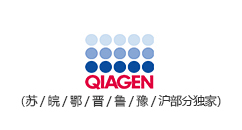

 用小程序,查商品更便捷
用小程序,查商品更便捷



 收藏
收藏
 对比
对比 咨询
咨询Performance
The kit detects a greater number of transcripts than competing methods at any sequencing depth. In some single-cell RNA-seq workflows PCR is used extensively for both cDNA amplification and to amplify the minute amounts of library produced. This has a negative effect on library diversity from the loss of low-abundance transcripts due to both stochastic effects and PCR-bias during cDNA amplification and the generation of PCR duplicates during library amplification. Additionally, these PCR systems often introduce GC-bias and length-bias, which can make the sequencing of GC-rich or long transcripts difficult. In contrast, the QIAseq FX Single Cell RNA Library Kit relies on a highly-efficient MDA reaction to amplify cDNA, and generates enough material that library amplification is not necessary, delivering a completely PCR-free workflow. This eliminates PCR duplicates and maximizes the number of transcripts detected, including long transcripts such as lncRNAs.
Principle
This kit relies on three key technologies to enable PCR-free RNA-seq from single cells. After cell lysis, gDNA degradation and reverse transcription, the cDNA is ligated to generate a long template that can be amplified in a multiple displacement annealing reaction. This is performed with a high-fidelity, ultra-pure version of the phi29 polymerase, and generates µg amounts of long cDNA. This long cDNA is then fragmented with the random FX technology into short inserts suitable for sequencing. Finally, a highly optimized and efficient single-tube library preparation packages these inserts into NGS libraries which can be sequenced directly, without the need for library amplification and additional PCR-bias. Taken together, the high-yield MDA, random and unbiased FX fragmentation, and efficient single-tube library construction deliver highly-complex PCR-free RNA-seq libraries from single cells in only 5.5 hours.Procedure
The QIAseq FX Single Cell RNA Library Kit is a complete cell-to-library solution that generates RNA-seq libraries from single eukaryotic cells or from pg-levels of purified RNA. The kit contains reagents for the efficient lysis of isolated single cells from common cell-sorting or cell-isolation platforms. After lysis, genomic DNA is degraded and reverse transcription is performed. This reaction can be primed from either an included oligo-dT primer in order to reduce the number of reads arising from ribosomal RNA and to enrich for polyadenylated RNAs, or from random primers, for example when sequencing viral RNA genomes from limited samples. After reverse transcription and second strand synthesis, a ligation step generates a long, double-stranded cDNA template which is amplified via multiple displacement annealing using a specially engineered, ultra-high fidelity phi29 polymerase. This generates µg amounts of amplified cDNA, some of which can be stored for later use or confirmatory testing. Amplified cDNA is fragmented with a highly random, enzymatic fragmentation step, which generates inserts compatible with common sequencing read lengths, and insert size can be varied according to individual preferences. No exact quantification of the cDNA is necessary prior to fragmentation, as both the amplification process and fragmentation reaction are extremely robust. Insert DNA is end-polished and subjected to a highly efficient ligation reaction with the included barcoded adapters, which can be purified by standard methods prior to quantification and sequencing. Amplification of the library with PCR is not necessary, so the production of PCR duplicates is avoided and library diversity remains high.
Applications
- Gene expression profiling
- Transcript detection
- Regulatory RNA sequencing
- Viral genomics








 危险品化学品经营许可证(不带存储) 许可证编号:沪(杨)应急管危经许[2022]202944(QY)
危险品化学品经营许可证(不带存储) 许可证编号:沪(杨)应急管危经许[2022]202944(QY)  营业执照(三证合一)
营业执照(三证合一)